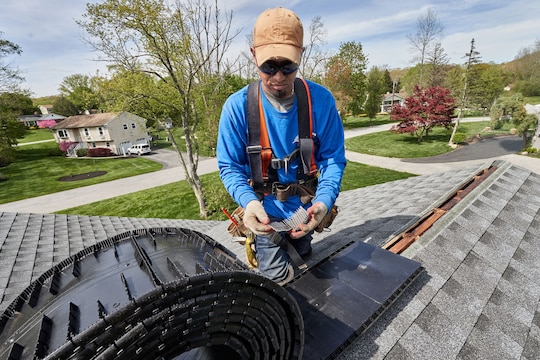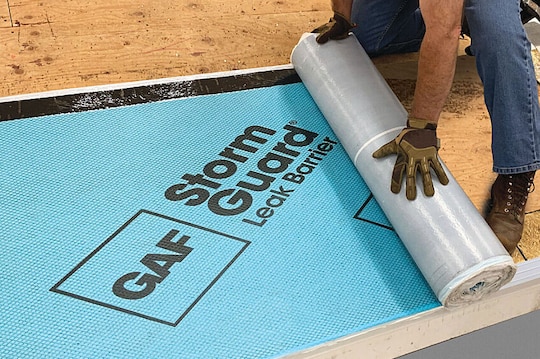
Your roof plays a crucial role in defending your home against the weather. Roofing felt is a protective layer under your shingles (or other roof covering) that helps keep excess moisture outside your home. Since your roof deals with all kinds of weather elements, like rain and wind, snow, and ice, it often needs all the help it can get. Here is everything you need to know about this roofing product including what it is, minor differences between kinds, and why your roof might need it.
What Is Roofing Felt?
Roofing felt is a type of roofing underlayment, a thin water-shedding barrier that's added between your roof shingles and the decking. This secondary layer of protection helps prevent moisture from infiltrating your roofing system and coming in contact with the wood roof deck. It's especially effective at protecting the roof from wind-driven rain and snow. Roofing underlayment an effective barrier to all kinds of weather conditions that a roof has to deal with.
Roofing felt is commonly made from natural materials like wood cellulose soaked with a protective asphalt layer, known as bitumen, to give it water-shedding properties. Other types of underlayment are comprised of materials like fiberglass, polypropylene, and polyester.
What Is Roofing Felt Used For?
The main function of roofing felt, like all forms of underlayment, is to protect the decking below your shingles by keeping water out. In the event that there is shingle blow-off or damage caused by a high wind event like a hurricane, felt can help to prevent water infiltration from making its way into your home until you are able to have permanent repairs completed.
Depending on the type of wood used for the decking, roofing felt can also prevent wood resin stains. The material shields the shingles from the resin emitted by the wood and reduces the chance of staining, so your roof maintains its aesthetic appearance.
Roofing felt can also maintain or increase the fire rating of the roof. Building codes sometimes require an underlayment below the shingles to meet a Class A fire rating. Be sure to check local building codes for roof underlayment requirements in your area.
Are There Different Kinds of Felt?
Now that you know what roofing felt is, let's look at the different kinds. There are two main types of asphalt saturated roofing felts: 15 lb. and 30 lb. The numbers typically represent the weight in pounds per hundred square feet. Roofing felt that's 15 lbs. per hundred square feet is often used in applications where you want to reduce the weight placed on the roof. The downside is that it can be more vulnerable to wear and tear.
Roofing felt that weighs 30 lbs. per hundred square feet is for heavy-duty projects. While it can be more resistant to wear and tear, it's also heavier, which places additional stress on the roof structure.
In addition to typical #15 and #30 asphalt saturated felts, synthetic roofing felts have become a common roofing underlayment due to their durability, tear-resistance and moisture-resistant construction.
Why Your Roof Needs Underlayment
There is more than one kind of roofing underlayment, and roofing felt is just one of them. While it's not always used, its benefits outweigh the small additional cost of having this additional protective layer.
Synthetic roofing felt like the GAF FeltBuster® can prevent water from leaking into your home and damaging the roof decking. Ensure your next roofing contractor uses quality materials to save you money in the long run. Connect with a contractor certified by GAF* to discuss your specific roofing needs.
*Contractors enrolled in GAF certification programs are not employees or agents of GAF, and GAF does not control or otherwise supervise these independent businesses. Contractors may have agreed that they will use GAF roofing products, and may receive benefits, such as loyalty rewards points and discounts on marketing tools from GAF for participating in the program.






